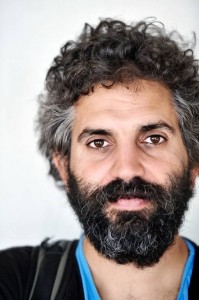 David Cuartielles
David Cuartielles
David Cuartielles is currently the head of the Prototyping Laboratory at K3, Malmö University, Sweden, while he conducts his doctoral thesis. In 2005 David co-created the Open Hardware platform Arduino, for which they have earned an Honorary Mention to the Ars Electronica Digital Community Prix 2006. In 2007 he developed a robotic theater piece at the Lorca Museum in Granada, Spain and had a research residency at Samsung Art and Design Institute in Seoul, Korea. In 2008 he created the 1scale1 Prototyping Studio specialized in building interactive art installations and software for mobile platforms. In 2009 he launched the project “la Maquila del Faro” in Mexico City,where he created a laboratory for educating children in the use of open source tools, the internet, and robotics. Since 2010 he is research fellow at the Medea Research Studion in Malmo University, Sweden. From 2011 David is building the Arduino robotics platform called Lottie Lemon and designing the Arduino block programming language.
Arduino As Enabler of Open Design : Design using Open Source Hardware
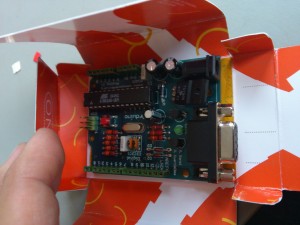
Since it’s origin, Arduino was created with designers and artists in mind. It was the goal to ease the entrance level to work with digital electronics. Besides the fact that learning how to program is not easy, it requires a certain mindset, we were concerned with the disconnection of the physical and the digital in the way it makes hard for people to envision the technical result to a project at an early phase in the ideation process.
The digital crafts do still have a strong disconnection between material and the outcome, while the physical crafts not so much. In other words, one can easily imagine how wood turns into a chair by cutting, nailing, and painting; but when looking at operators, variables, lines of code … it requires a different level of abstraction to see that turning into something. Therefore we focused in the creation of a platform that would speed up the initial learning process. We wanted to give a chance to people to reach a certain level of confidence with the digital material for them to have a glimpse to the digital complexity and not fear approaching it during their creative processes.
Making Arduino’s knowledge base open was a decision taken both from the heart -we felt it was the right thing to do- but also from the political standpoint that educational tools must be open. When learning about anything, it should be possible to reach the essence of the matter and also to use that knowledge for your own and the others’ good.
This talk will reflect about these issues: how openness affects design, but also how sharing can become a competitive advantage in a world like design and arts were uniqueness seems to have a strong weight.
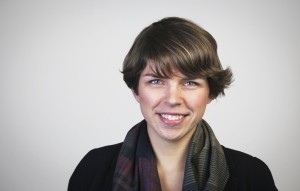 Cecilia Palmer
Cecilia Palmer
Cecilia Palmer is based in Berlin and works as designer and programmer between fashion, web, sustainability and open source. She is the founder of green, open-source fashion label Pamoyo and swap & remake event Fashion Reloaded, both initiatives aiming to bring upcycling and open source tactics to a new level among consumers and producers alike. In her work she constantly strives for collaboration across artistic borders. When not conspiring new ways of bringing abundant clothes back into the loop, she explores the magic of the internet as programmer, and currently works as web developer at newthinking communications. She was born in Sweden, and lived and worked in France, Holland, and since 2005 in Berlin.
Open Source Tactics, Fashionistas and Makers
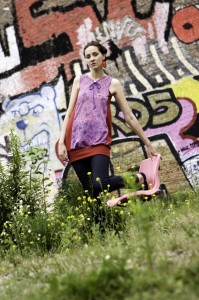
Fashion and open source is an equally contradictory as perfectly matching couple. It’s an industry hard to imagine without copycats and trends leading to the millionfold reproduction of designs. Meanwhile it’s a world of smoke and mirrors, hidden somewhere behind those glasses of Karl Lagerfeld.
Alongside the growth of the D.I.Y movement and participatory design initiatives, this magic box is turned inside-out and opens up to users as fashionistas to go from passive consumerism to a collaborative process. So how can open source tactics be applied to the world of fashion design?
Cecilia Palmer will show and tell about her own work with the open source fashion label Pamoyo and the participatory event series Fashion Reloaded, and presenting some of the most intriguing projects, people and labels currently working in this field.
This presentation will talk about creative commons, participation, the blueprints of fashion design, how open fashion can help clean up one of the dirtiest businesses on earth and why fashion designers should wish for their consumers to become makers.
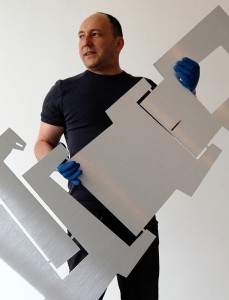 Ronen Kadushin
Ronen Kadushin
Ronen Kadushin is an Israeli designer and design educator living in Berlin since 2005. He taught furniture design and design creativity courses at leading Israeli and European design academies since 1993. In 2004 Kadushin developed the Open Design concept, where the designs of his products can be downloaded, copied, modified and produced, much as in Open Source software.
Based on this concept, he formed Open Design, a design and production company for furniture, lighting and accessories which are produced in Berlin and sold in Europe and the USA. Open Design products are regularly presented in solo and group exhibitions world wide, and published in professional literature. Kadushin is teaching Open design courses in universities and speaks at conferences. He is the author of the Open Design Manifesto.
Open Design – Products in a networked culture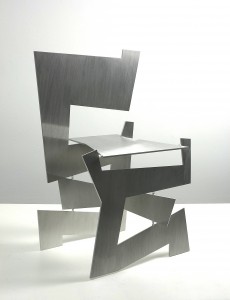
A revolution in product development, production and distribution is imminent due to the Internet’s disruptive nature and the easy access to CNC machines. Open Design is a proposal to make this happen. It’s aim is to shift Industrial Design to become relevant in a globally networked information society. The presentation introduces some of my Open Design work, its context, essentials and insights expressed through this new design method. It describes some realizations about industrial design and its relations to the Internet revolution, creativity, education and consumerism. I will also talk about the new design movement that is emerging around various Open Culture communities, platforms and individuals, its design concepts and attitudes.
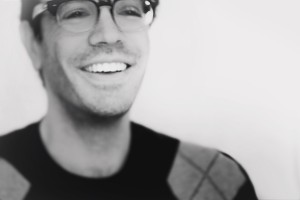 Peter Kirn
Peter Kirn
Peter Kirn is an American electronic music and live visual artist, technologist, and journalist, based in Berlin. He is founder and editor of createdigitalmusic.com and createdigitalmotion.com, as well as an author on technology and creation (Macworld, Keyboard, Wax Poetics, Computer Music, Make, DE:BUG, Popular Science). He is also co-producer of the open-source MeeBlip line of hardware synthesizers. He is a frequent speaker on creative technology, both its design and application, for musical and interactive visual media. He is a PhD Candidate in Music Composition at The City University of New York Graduate Center.
Open Source Design and Music
Our MeeBlip, Ourselves Fundamentally, music is sharing at its most essential. The act of performing music together and for others, the common knowledge of how music is patterned and communicated, is communal. It follows that working out the mechanics of how to share music technology will be essential to musicians. That technology is bound up with the making of music and the design of sound Create Digital Music’s Peter Kirn will speak to the broad picture of what open design can mean for music, and the specific “put your money where your mouth is” experience of producing an open source hardware synth. In the larger picture, building open source designs for musicians has been an area of tremendous activity and debate. Music technology’s approach to the matter has been sometimes spotty. Early hardware typically included schematics, and circuit designs were routinely shared informally. 
But more recently, particularly in the age of software, most commercial endeavors rely on proprietary information as part of their business model. That is beginning to shift once more. Players in the last few years from monome to KORG have experimented with new ideas – some with open source licenses, and others without – to produce new communities around their tools and to enable hacks and modifications. Explicitly open source hardware remains something relatively new, which brings us to the case study of the MeeBlip. As even free software community advocates have been quick to point out, making physical hardware is different from making software. Looking at the MeeBlip, we will examine some of the realities of licensing, support, and the challenges of designing, manufacturing, and shipping a hardware product – including both some successes and some hard-learned lessons. We’ll also consider, principals aside, what the real-world implications of opening up hardware may be for musicians, and what may most fit this design. Finally, in both cases, we look to what sharing may mean for the longer-term evolution of music making with technology. In a world of disposable apps, music points to what the realities of technology and design are to people who use tools out of love, with every spare moment, who seek relationships with technology that becom not just passing diversions. They challenge us to design something you’d use for lifetimes.
And, of course, we won’t miss an opportunity to make some noise.
 Greg Saul – Diatom Studios
Greg Saul – Diatom Studios
Greg Saul is a designer, programmer, maker who is interested in challenging the roles of the consumer and designer through his work.Greg was born in Wellington New Zealand, a city with great coffee and a lot of weather. Greg studied industrial design at Victoria University of Wellington. During his studies he took an exchange to Carnegie Mellon University in the United States where he finished his design studies and stayed on to teach for a semester. After this Greg worked at the JST Erato Design UI Project as a visiting researcher in Tokyo where he developed a program called SketchChair that allows people to design their own furniture. Greg now lives in London.
Experiments in co-design: Design your own Furniture and tiny CNC-Bots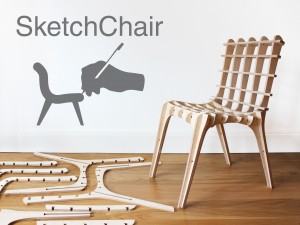
Recently, there have been significant advances in digital manufacturing technologies. Tools, such as 3D printers, laser cutters, and computer-controlled milling machines, have become cheaper and more accessible to consumers. These ‘desktop manufacturing’ or ‘personal fabrication’ processes are providing the means for people who might normally be consumers to become creators.
Our talk will look at SketchChair and how it is an example of a computational tool that gives the end users a role in designing this own making their own products and how this evolvement in their design makes these products more meaningful to the user compared to their mass produced equivalents.
We will also talk about the community aspects of SketchChair and Piccolo and how it’s open-source nature of these products allows designs to be easily shared, hacked and expanded on by a community of users, also a little about how this system currently works and might work in the future.
We will use Piccolo to explore how CNC production has changed the economies of scale at which a product can be produced making it feasible for small companies to design and produce products in small numbers.
The Piccolo project is a collaboration between Diatom Studio Cheng Xu and Huaishu Peng from the CoDe Lab.
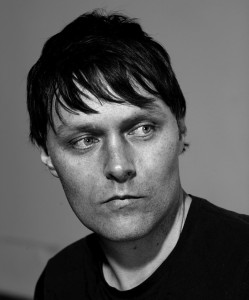 Julian Oliver
Julian Oliver
Julian Oliver is a New Zealander and Critical Engineer based in Berlin. His projects and the occassional paper have been presented at many museums, international electronic-art events and conferences, including the Tate Modern, Transmediale, Ars Electronica, FILE and the Japan Media Arts Festival. Julian’s work has received several awards, most notably the Golden Nica at ArsElectronica for ‘Newstweek’, a collaborative project with studio partner Danja Vasiliev.
Julian has given numerous workshops and master classes in software art, augmented reality, creative hacking, data forensics, computer networking, object-oriented programming for artists, virtual architecture, artistic game-development, information visualisation, UNIX/Linux and open source development practices worldwide. He is a long-time advocate of the use of free software in artistic production, distribution and education.
Entry Points: Critical Engineering in The Closed World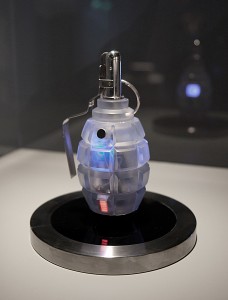
Ask anyone how a postcard you sent them arrived in their mailbox and they’ll give you a vaguely coherent description. Ask them however to explain how your email arrived in their inbox and most will struggle, resorting to a surrealist impression of the metal and minds that make it all work.
In this lecture Julian will discuss the dangers of depending on misunderstood and often opaque infrastructure. In doing so he will position the language of Engineering – used in a critical and open design context – as providing the vital tools we need for both better understanding and critically engaging the world we live in today. Alongside, Julian will introduce several of his own works, and work made with others, that underscore his commitment to both Critical Engineering and open design practices.
 Addie Wagenknecht – Nortd Labs
Addie Wagenknecht – Nortd Labs
Over the last half decade Nortd Labs’ open source hardware has been built and used by thousands of people, labs, hackerspaces and universities worldwide. Nortd believes that people should collaborate globally and create locally. Nortd predominantly merges themselves in open software authoring, post-industrial art and hardware engineering. The result is typically work with an inviting openness and an imminent drive to unravel the mystification and black boxes of this century. Nortd was founded in 2006 by Addie Wagenknecht and Stefan Hechenberger.
Nortds’ work has been covered by outlets such as Forbes, BBC, MIT Technology Review, The Economist and ARTform. Most recently, Nortd held a fellowship at Carnegie Mellon University, STUDIO for Creative Inquiry, under Golan Levin and were Researchers in Residence at Hyperwerk Institute for Post-industrial Design.
The Lasersaur Project
The Lasersaur is about bringing industrial production to a new collaboration model. Practically every human activity is going through profound changes as we can effectively coordinate group action in a peer-to-peer fashion. This marks a departure from compartmentalized knowledge and hierarchical management to people working together on a level playing field.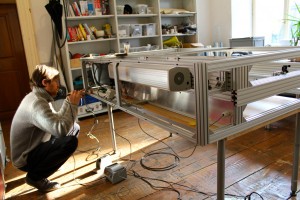
The Lasersaur is also community of artist, engineers and makers that has been imagining and creating an open source, low-cost, high performance technological framework with the paramount goal of easy replication. These DIY-fabricated machines can be used to help build a new sustainable economic model that is open and accessible to everybody.
Starting with the Lasersaur, an open source laser cutter, we are engaging in a long term design marathon to push personal fabrication towards a mainstream movement that will eventually change how we design, produce, and consume everyday objects. Laser cutters, like 3D printers, routers and mills, belong to a class of robotic machines that tremendously enable makers. This fabrication hardware is filling a gap between idea and industrial production. The Lasersaur Project is a design movement that celebrates small series, customized and locally fabricated products. This is to say, the community is about opening and defining new fertile grounds of creation.
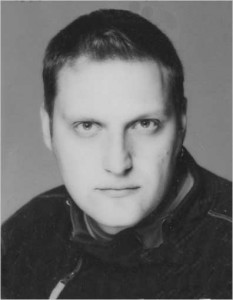 Gerin Trautenberger
Gerin Trautenberger
Besides his Work in Design Management and strategic Consulting, Gerin is trained for product and furniture design. After an initial period of communication and digital design he changed into the field of product and industrial design. He is also member of the austrian professional association of Design where he is responsible for the compilation and publishing of the guidelines for royalties and professional fees. Since 2009 he is also board member of the Creative Industries Austria. Since 2011 he is also appointed member of the Leadersip Board of the European Design Innovation Initative, which consults the European Comission in particular the DG Enterprise and Industry Policy Development for Industrial Innovation. Resent years Gerin Trautenberger was honored and mentioned in merits with his work as a creative director for several companies, which lead to a two years lecture employment on the university of applied arts (Prof. Weibl/ Fürstner) in Vienna.
Open Economy – Future Factory
During the past ten years, we have approached what might be the end of industrial mass production and fabrication. We have seen the development of a post-industrial production system that is able to handle individual aspects in mass customised, small serial production. In the production process each new product can be optimised or adapted for personal taste or individual needs and the final product will be unique and special. This new manufacturing and production system has been enhanced by computational fabrication and standardised interfaces, giving more freedom to engineers, designers and architects.
Creative Commons, Open Source and Open Design Practices in Production
All these new methods, practices and developments have been made possible by the development of new technologies. The development of standardised interfaces has been key. The increased use of communication, and global exchange of files and ideas, as well as computational fabrication over distance is the key to the Future Factory and to the paradigm shift in manufacturing. The process of production is open to easy changeable manufactory lines and on-demand production. In addition, machines get easier to program and are increasingly useable for non professionals.
The development of Linux, the open source operating system for computers is a excellent example of an open process of innovation and design. This example could be easily transferred to other industries and business sectors. For working in the digital sphere like the internet in the resent years a new legal framework called the creative commons licence was developed. The main principle and practice of this specific open source development is peer production by collaboration, with the end-product, blueprints and documentation as open source and free for the public.
Open Global Design with local production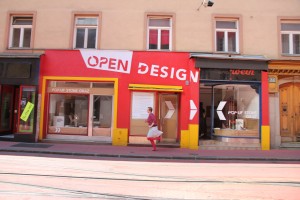
We can already witness how these new technologies, new approaches and new ways of working and producing are growing. One example is the projects of the Open Design Pop-Up-Store for the City of Design Graz (Design month 2011)1. The Open Design Pop-Up store was realised with a full digital workflow, and the shop interior as well as the products sold in the Pop-Up Store were made entirely with computational fabrication. The products for sale where designed globally, but all of them where produced locally. The region of Styria, where Graz is the capital, profited form the added value of manufacturing since all the goods where produced in the region. All products where manufactured in small numbers or on demand. On the plus side no cost of transportation, no cost of stocking. The Open Design Pop-Up Store was a demonstration of a new way of collaboration and production in Europe.
The lecture will not only focus on the advantages of a full digital workflow and computer aided manufacturing but will also examine the developments in Austria and on European level.
